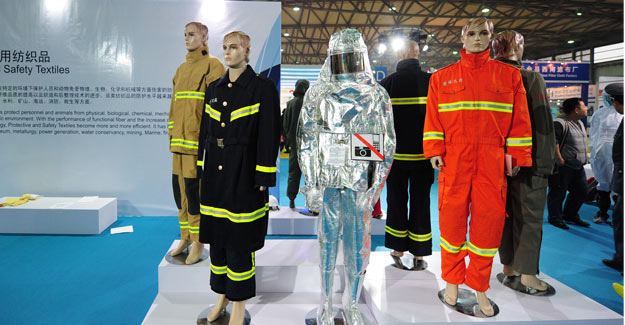Firing On All Cylinders
Firing On All Cylinders

Nonwoven filter media are becoming more sophisticated all the time, with the result that they are finding an ever-increasing range of end-uses - and even replacing heavier woven oil-coated fabrics in US Army helicopter engines.
The filters for this application are being supplied for the inlet barrier engine filtration systems of H-60 Black Hawks helicopter engines by leading filter manufacturer Donaldson. Based on nanofibre technology, they are dry and therefore easier to maintain than oil-coated alternatives and they can also be cleaned using basic techniques.
Just as importantly, however, they very effectively protect the engines from contamination, performance degradation and failure.
Donaldson has also recently published its own statistics on the global filtration market which it estimates now has an annual value of US $50 billion. The market for engine protection within this is certainly considerable - worth an annual $8 billion - and separate to the automotive air filtration market, worth another $3 billion, according to Donaldson.
New standard
Among recent developments in transportation filtration, a new ISO standard which more accurately reflects the performance of an engine air intake filter was introduced in 2014.
The previous filtration performance test standard, ISO 5011, was established in 1988 and adopted from the US SAE J726 standard which has been used since the 1940s, according to Ulrich Stahl of Freudenberg Filtration Technologies ISO 5011 provides data for pressure drop, gravimetric efficiency and dust holding capacity, but the new ISO 19713 will involve the fractional collection efficiency measurement for engine intake air filters for all road vehicles.
"The previous standard would show results on the high side because of the size of the dust particles specified, but the market asked for a much more efficient system that takes into account sub-micron particles," says Stahl. "This is because of the presence today of electronic devices around the engine which are very sensitive."
Fractional collection efficiency can be measured at intervals of 10%, 25%, 50% and 100% of the final pressure drop increase to more accurately reflect performance. With this approach, more detailed information is available to users and the filter medium type can be accurately specified to meet requirements. Stahl cited one outcome as being the development of progressively layered nonwovens with their fibre structures becoming increasingly finer in order to achieve much higher dust holding capacity.
In addition, new engine intake air filters are being developed to meet further requirements from the market in respect of:
1. Acoustic behaviour
2. Water resistance
3. Air flow distribution
4. Sufficient filter area at limited space
5. Pedestrian protection (See below)
6. Weight reduction
7. Engine emission reduction
Optimisation
For BMW, Freudenberg has designed a new modular filter which is placed directly over the engine body. This eliminates the need for an active hood over the engine and also meets new European Union guidelines on head impact protection for pedestrians.
The idea is that in the event of certain crash situations, the filter system will act as a buffer to slow the possibility of the metal engine emerging from the bonnet. Optimising the integration of the plastic parts and the nonwoven filter media was the key to the development and both the initial installation and its servicing is possible without any tools.
Emissions
Increasingly tougher standards for emissions from engines are anticipated in Europe, even after the introduction of the EU VI Clean Air Act in relation to NOx - nitric oxide and nitrogen dioxide produced from the reaction of nitrogen and oxygen gases in the air during combustion - was introduced in 2014.
Formaldehyde emissions regulations are being tightened up in general, and in addition, the US UL558 on road safety standard includes flame retardant requirements for vehicles, while carbon footprints relating to fuel economy are increasingly being scrutinised.
Nonwovens producers are responding to these challenges with new developments, including a flame retardant media based on a halogen-free water durable chemistry which has been introduced by Ahlstrom.
The company is also exploring the significant removal of formaldehyde from emissions by the use of chemical scavengers, or their complete elimination by the development of alternative chemistries in place of formaldehyde-containing resins.
The scavenger can be applied before the resin impregnation, although a slight loss in mechanical properties and decrease in curing speed has resulted, which Ahlstrom is currently trying to rectify.
In looking to appropriate formaldehyde-free chemistry, an epoxide has been substituted for the formaldehyde for the crosslinking of a resin and wet mechanical properties equivalent to standard phenolic resin grades have been achieved, with no resulting emission of phenol.
Formaldehyde-free acrylic-based chemistries are also available, but a drawback is the wet strength properties of the treated media, which Ahlstrom is looking to solve with proprietary additives and polymeric resins.
The company is also working on fast curing media which will provide significant benefits in energy and environmental savings. Filter media will be extensively showcased at at the INDEX show, which takes place in Geneva, Switzerland from April 4th - 7th 2017, along with a number of other applications targeted at the automotive industry.



 textileexcellence
textileexcellence 







